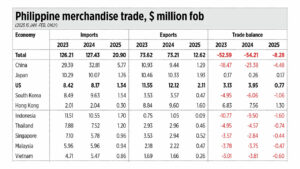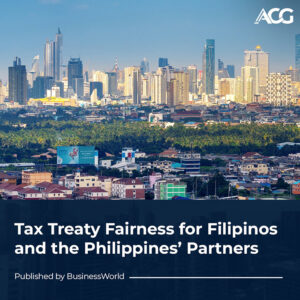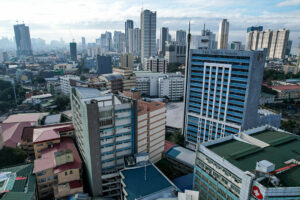US President Donald Trump announced last week, on April 2, that his “Reciprocal Tariffs” and the rates for Asian countries are as follows: Cambodia, 49%; Laos, 48%; Vietnam, 46%; Myanmar, 45%; Thailand, 36%; China, 34%; Indonesia and Taiwan, 32%; Pakistan, 29%; India, 26%; South Korea, 25%; Japan and Malaysia, 24%; the Philippines, 17%; and Singapore, 10%. These will take effect this week, on April 9.
BusinessWorld reports related to this are: “Southeast Asia nations, hit particularly hard by US tariffs, prep for talks with Trump” (April 3), “US slaps higher tariff on Philippines” (April 4), “PEZA is seeking reduced tariffs for key economic zone exports to US” (April 7), and, “PHL to benefit from trade diversion due to US reciprocal tariffs” (April 7).
Before discussing further, check out the Philippines’ latest trade numbers and trends in the accompanying table. Here we see that, 1.) our main export market is the US followed by Japan and Hong Kong, 2.) our main source of imports is China, followed by Japan and Indonesia, 3.) of our total imports (exports plus imports), 21% is with China, which is a larger share than Japan and the US’ combined share of 20%, 4.) our largest trade deficit is with China while our largest trade surplus is with the US.
REACTIONS AND POLICY OPTIONSConsumers, corporations, and governments have various reactions and policy options to deal with this new trade reality.
1. Reactions by governments abroad. Asian governments so far have had varied reactions. Vietnam and Taiwan have offered to set zero tariffs for US goods, while Taiwan says it will invest more in the US, so the US should drop or delay the high tariff rates. Cambodia has offered setting a low 5% tariff on US goods, while China has countered with its own tariff hike on US goods. The White House’s national economic council director Kevin Hassett said that over 50 countries have reached out to Trump looking to begin negotiations for lower tariffs.
2. US consumers will have two choices. One, keep buying imported products, especially those with specific qualities that they need, even at higher prices due to higher tariffs. And two, buy US made products. This is a micro — corporate and household — decision by the people there and not so much a concern for consumers abroad.
3. Trade diversion by US consumers. Trade diversion or supply chain changes, assuming the products’ quality are similar or comparable, is something US companies can consider. They will buy or import more from countries which have lower prices via lower tariffs like Philippines and Singapore, and import less from countries with higher tariffs like Thailand and Vietnam. US multinationals abroad will also follow this trend, with more investments in countries with lower US tariff rates.
4. Trade diversion by high-tariffed countries. Suppose there are 1,000 cargo ships from Japan going to US monthly, then this number drops to only 950 after the tariff hikes. The 50 ships are diverted to other Asian markets, and there are five additional Japan cargo ships going to ports in the Philippines on top of the regular Japan ships. This trade diversion is done via discount by exporting countries to entice more buyers and may lead to “dumping.”
5. Tariff options by destination countries. When more imports at cheaper prices come in, trade deficit in the Philippines (-$54.2 billion in 2024) or other countries can expand. There are three options: a.) raise Philippine tariffs for those countries to discourage more imports and control the deficit, b.) keep the tariff rates as is, or c.) further lower our tariffs to sustain a low level of inflation rate.
6. Hasten setting up FTAs and EPAs among countries. The Philippines has many pending free trade agreements (FTAs) and Economic Partnership Agreements (EPAs) with more countries or country blocs.
7. Unilateral free trade, zero tariffs for all countries. Hong Kong is the prime example of this. There is no need for trade negotiations, they just abolished tariffs decades ago, with exceptions on products with national security and public health effects. Hong Kong attracts more visitors, investors, and shoppers than we do. Hong Kong imports goods via hundreds of cargo ships, then “exports” these goods via millions of visitors’ shopping bags.
The Philippines should consider zero-tariff trade with the US, then a unilateral free trade policy like Hong Kong.
The ASEAN Economic Community (AEC) was implemented in 2015 and it is the realization of the ASEAN Free Trade Area (AFTA) that was started in 1992. This is a free-trade regionally integrated common market of nearly 700 million consumers.
END GAME: GLOBAL FREE TRADEWith the aggressive level of tariff reciprocity unleashed by Trump and quick reaction towards zero tariffs by some countries like Vietnam and Taiwan, I think Trump is actually aiming for mutually low or even zero tariffs among countries in the world.
Free trade immediately reduces animosity while creating more goodwill among countries, especially between neighbors. As Frederic Bastiat, a famous French economist said once, “If goods cannot cross borders, soldiers will.”
No tariffs mean more supply of useful goods from more countries and suppliers, which can lead to more productivity in the country. And free trade benefits are not only in merchandise goods but also in non-merchandise services, more tourism, and peace and prosperity for the world.
Bienvenido S. Oplas, Jr. is the president of Bienvenido S. Oplas, Jr. Research Consultancy Services, and Minimal Government Thinkers. He is an international fellow of the Tholos Foundation.






